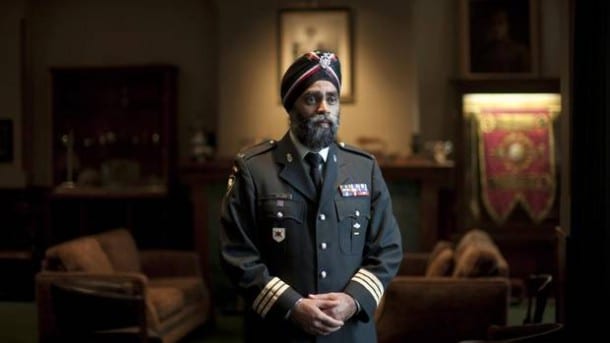VANCOUVER, BC—The significance is not lost on Harjit Sajjan, a Sikh, that the regiment he now commands is the same that was involved in forcing the Komagata Maru out of Vancouver Harbour 100 years ago. “Our regiment remembers it as a black mark on our history,” he says in an interview. “It shouldn’t have happened.” Lieutenant-Colonel Sajjan became the first Sikh to head a Canadian regiment when he was promoted to commanding officer of the British Columbia Regiment (Duke of Connaught’s Own) in 2011.



His appointment, he says, shows how much Canada has grown in the past century. “There are scars on our history, but we can’t dwell on that past, and we can’t change it. We must learn from it,” he says. “The best way to learn from it is to ask ourselves if we’ve made change … and we have made change. My sitting here is that greatest example of it.”
Growing up in Vancouver as a Sikh immigrant from India’s Punjab, Lt.-Col Sajjan knew the story of the Komagata Maru well. It left its mark. “We were used to these types of stories. Back then there was a lot of direct racism so we thought it was normal that this type of incident could happen.”
Sikhs believe in service – to both community and God – and have a historic reputation for being fearless and devoted soldiers. But Lt.-Col. Sajjan says his desire to serve was first met with skepticism. “When I was growing up, I didn’t even think I was allowed to join the military,” he says. “When I first joined [in 1989] there was a lot of racism in the armed forces. One unit didn’t even accept me.”
Lt.-Col Sajjan believes that only in a nation like Canada could we see the cause of diversity advance so quickly from the events of the Komagata Maru. “This didn’t happen that long ago, and progress has been made. It is a historical milestone from which we can measure change,” he says. “I look at our diversity in Canada as an example for the rest of the world. If we don’t succeed with it, it will not succeed anywhere else.”




